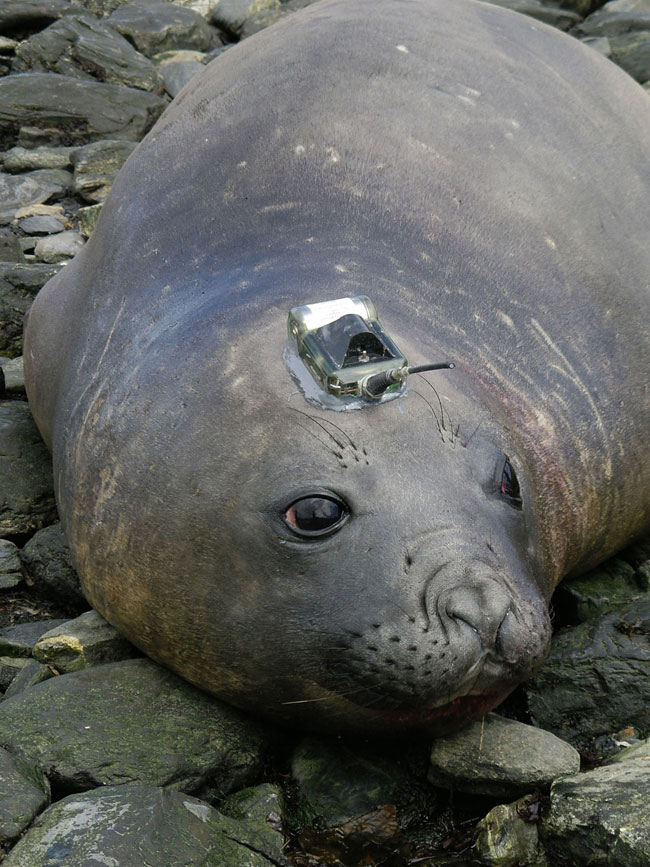Seals Wired to Collect Deep-Sea Data

Sea creatures dwelling in the freezing waters at the bottom of the world hold many secrets, including clues to growing changes in global climate.
Now one of the top predators in these waters has been armed with satellite-transmitting devices to help researchers peer into this mysterious world surrounding Antarctica.
The southern elephant seal is the largest seal in the world, with males reaching up to 22 feet long and 11,000 pounds in weight. The elephantine snouts of these bulls produce extraordinarily loud roars.
The lives of these giant marine carnivores and their prey has always been hard to monitor, diving as they often do to great depths under the ice in inaccessible stretches of the Southern Ocean surrounding Antarctica. Even what exactly southern elephant seals eat remains unknown. At the same time, their long-ranging and deep-diving natures make them valuable recruits to explore their mysterious waters.
An international team of scientists tagged 85 elephant seals, gluing sensors to their fur with epoxy resin. These devices monitored water temperature, saltiness and depth, transmitting these data to satellites every time the predators briefly surfaced for air for three to four minutes.
Approaching the seals during mating season could have proven hazardous, "as they can get quite aggressive, with males fighting over harems and females protecting new pups," explained researcher Martin Biuw, a marine biologist at the University of St. Andrews in Scotland. The scientists instead tagged the seals afterward, near the end of the summer, when they were easygoing enough to tranquilize by hand.
The southern elephant seals "ranged across the entire Southern Ocean," swimming thousands of miles a year, Biuw explained. Tracking where these predators went shed light on the location of the most productive waters loaded with prey. The salt and temperature readings the sensors recorded suggest these waters were loaded with nutrients from the water currents that encircle Antarctica and from under the winter ice pack.
Sign up for the Live Science daily newsletter now
Get the world’s most fascinating discoveries delivered straight to your inbox.
"The fact that we can let the animals themselves measure the oceanography is extremely exciting, being arguably the best oceanographers, since their survival depends on it," Biuw said. Such a strategy will not only help scientists learn more about these creatures but also how the environment they dwell in alters over time due to changes in global climate, he added.
Future updates with the sensors should allow them to record chlorophyll levels underneath the ocean surface as well, to see how productive photosynthetic life is around the Antarctic. The findings are described online August 6 in the Proceedings of the National Academy of Sciences.
- VIDEO: Under Antarctic Ice
- Image Gallery: Under the Sea
- Image Gallery: Scientists at the End of the Earth










